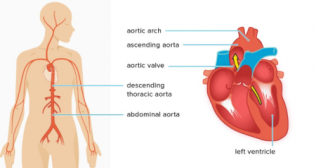
Diseases of the Circulatory System: Key Risk Factors and Warning Signs
The circulatory system is the body's central transport network, carrying oxygen, nutrients, hormones, and waste products throughout the body. When this complex system is disrupted, the consequences can be severe; often life-threatening. Circulatory system diseases are among the leading causes of death globally, yet many people remain unaware of their warning signs and underlying risk factors.
Whether it’s high blood pressure, blocked arteries, or heart failure, these conditions are often preventable with early detection and proactive lifestyle changes. Let’s explore 5 circulatory system diseases that deserve urgent attention, identify major causes, and outline symptoms that should never be ignored.
If you’ve ever wondered how serious circulatory problems can be, or whether you’re at risk, this is the place to begin.
Understanding the Circulatory System and Its Functions
The circulatory system also called the cardiovascular system includes the heart, blood vessels, and blood. Its job is to deliver oxygen and nutrients to tissues and remove waste products. Every heartbeat pumps oxygenated blood through arteries, while veins return deoxygenated blood back to the heart and lungs.
There are three primary components:
- Heart – the muscular organ that pumps blood.
- Arteries and veins – blood vessels that carry blood throughout the body.
- Capillaries – tiny vessels where oxygen and nutrient exchange occurs.
When any part of this system malfunctions, it can lead to circulatory system disorders; some sudden, others gradual and progressive. These diseases don’t just affect the heart. They can impact the brain, kidneys, limbs, and more.
In the modern setting, high-stress environment, circulatory illnesses are on the rise. Knowing how this system operates helps clarify why early intervention is so important. Even minor symptoms can signal deeper ailments of the circulatory system, which, if left unchecked, may lead to strokes, heart attacks, or chronic disability.
List of 5 Major Circulatory System Diseases
Many conditions fall under the umbrella of circulatory diseases, but five stand out due to their prevalence and severity. Understanding these core illnesses is critical for prevention and management.
1. Coronary Artery Disease (CAD)
The most common circulatory system disease, CAD occurs when plaque builds up in the coronary arteries, reducing blood flow to the heart. This can result in chest pain (angina), heart attacks, or heart failure.
2. Hypertension (High Blood Pressure)
Known as the "silent killer," hypertension often presents no symptoms but damages artery walls over time. It increases the risk of heart attacks, strokes, and kidney failure.
3. Peripheral Artery Disease (PAD)
PAD affects blood flow to the limbs, especially the legs. It’s caused by narrowed arteries and may lead to pain while walking, numbness, or even gangrene in severe cases.
4. Stroke
A stroke happens when blood supply to the brain is interrupted, either by a clot (ischemic) or bleeding (hemorrhagic). It’s a medical emergency with lasting neurological effects if not treated immediately.
5. Heart Failure
Unlike a heart attack, heart failure occurs when the heart can’t pump blood efficiently. This leads to fatigue, breathlessness, and fluid buildup in the lungs and legs.
These 5 circulatory system diseases are not isolated; they often overlap with each other. Someone with hypertension may also have CAD or risk stroke. Understanding their connections is vital for holistic treatment.
Common Risk Factors Behind Circulatory Problems
Most circulatory problems develop over time and start from modifiable and non-modifiable factors. While genetics and age play a role, lifestyle habits are often the most significant contributors.
1. Poor Diet
Diets high in saturated fats, trans fats, and sodium can lead to cholesterol buildup, high blood pressure, and obesity; all precursors to circulatory illnesses.
2. Lack of Physical Activity
Inactive lifestyles weaken the heart and blood vessels, making it harder to regulate blood flow and pressure. Regular movement improves circulation and strengthens cardiovascular health.
3. Smoking and Alcohol Use
Tobacco damages blood vessel walls and lowers oxygen levels in the blood. Excessive alcohol raises blood pressure and contributes to irregular heart rhythms.
4. Chronic Stress
Long-term stress raises hormone levels like cortisol and adrenaline, which can tighten blood vessels and increase heart rate, worsening circulatory system disorders.
5. Obesity and Diabetes
Excess body weight and insulin resistance increase the risk of hypertension, atherosclerosis, and blood clots. These metabolic disorders are tightly linked to circulatory diseases.
6. Age and Family History
Risk rises after age 50, especially with a family history of cardiovascular issues. While unchangeable, these factors warrant early screening.
By identifying these risks early and making lifestyle adjustments, the onset of ailments of circulatory system can often be delayed or even avoided entirely.
Warning Signs You Should Never Ignore
Recognizing early symptoms of circulatory system disorders can be life-saving. Many people dismiss signs as fatigue, indigestion, or stress until a crisis occurs.
Key Warning Signs Include:
- Chest pain or pressure: May feel like tightness, burning, or heaviness, especially during activity.
- Shortness of breath: Even light exertion causing breathlessness could indicate heart failure or vascular issues.
- Swelling in legs or ankles: Suggests fluid buildup due to poor circulation.
- Numbness or weakness in one side of the body: Especially if sudden, this may point to a stroke.
- Cold hands and feet: Can be a sign of reduced blood flow from PAD or heart disease.
- Rapid or irregular heartbeat: While sometimes harmless, persistent arrhythmias deserve attention.
- Dizziness or fainting: Might indicate low blood pressure, heart valve problems, or arrhythmia.
Symptoms may not appear all at once. A person may only feel slightly off: tired, lightheaded, or more breathless than usual. However, these subtle clues often mark the beginning of circulatory illnesses.
Never ignore these signs, especially if they persist or intensify. Immediate medical consultation can help diagnose hidden circulatory system diseases before they escalate into emergencies.
Diagnosing and Managing Circulatory Illnesses
Early diagnosis of circulatory diseases depends on a combination of symptom awareness, routine check-ups, and targeted testing. Common diagnostic tools include:
- Blood pressure monitoring
- Electrocardiogram (ECG)
- Echocardiography (ultrasound of the heart)
- Stress tests
- CT angiography or MRI
- Blood tests for cholesterol, triglycerides, glucose levels
Once diagnosed, treatment focuses on lifestyle changes, medication, and in some cases, surgery. Management plans may include:
- Antihypertensives: To lower blood pressure
- Statins: To manage cholesterol
- Anticoagulants: To reduce clot risk
- Stents or bypass surgery: To restore blocked arteries
Crucially, non-medical interventions are equally impactful: regular exercise, a balanced diet, stress control, and quitting smoking can reverse or stabilize many circulatory problems.
Ongoing management is a lifelong commitment. With regular monitoring and tailored therapy, patients with circulatory system disorders can live long, active lives.
FAQs: Reader Queries Answered
Q1. What are the early signs of circulatory system disease?
Ans. Fatigue, chest pain, cold limbs, shortness of breath, and swelling in the legs or feet are key early indicators.
Q2. Are circulatory illnesses reversible?
Ans. Some conditions like hypertension and early-stage PAD can improve with treatment and lifestyle changes, but others like heart failure may require long-term management.
Q3. What causes poor blood circulation?
Ans. Common causes include high cholesterol, smoking, diabetes, obesity, and sedentary lifestyle.
Q4. How do doctors test for circulatory problems?
Ans. Tests include ECG, echocardiograms, Doppler ultrasounds, CT angiography, and routine blood work.
Q5. Can young people develop circulatory diseases?
Ans. Yes. Poor diet, smoking, and genetic predispositions can lead to early-onset cardiovascular issues, even in people under 40.
Conclusion
Circulatory system diseases may begin silently, but their consequences are often loud and irreversible. With the right information and preventive habits, many of these circulatory illnesses can be avoided or managed early.
Don’t wait for symptoms to become severe. Prioritize regular health screenings, stay active, and be mindful of your diet. Learn your family history and discuss any potential warning signs with a qualified healthcare provider.
Circulatory health isn’t just about the heart: it’s about the brain, limbs, kidneys, and overall well-being. Take charge now. Your blood vessels, your future self, and your longevity depend on it.



















